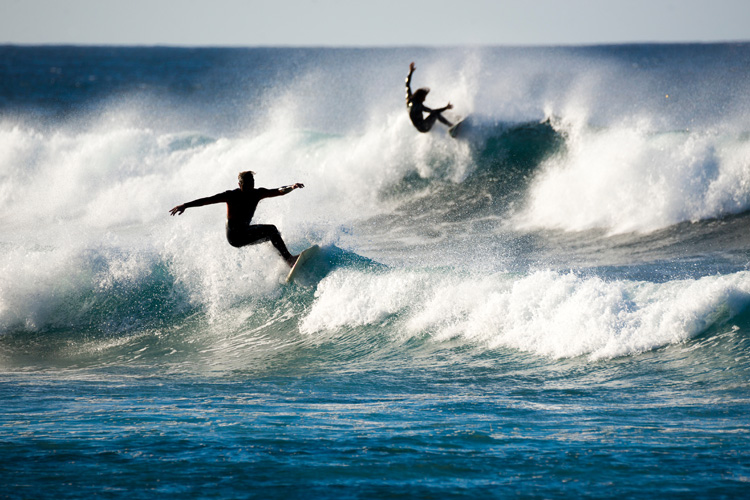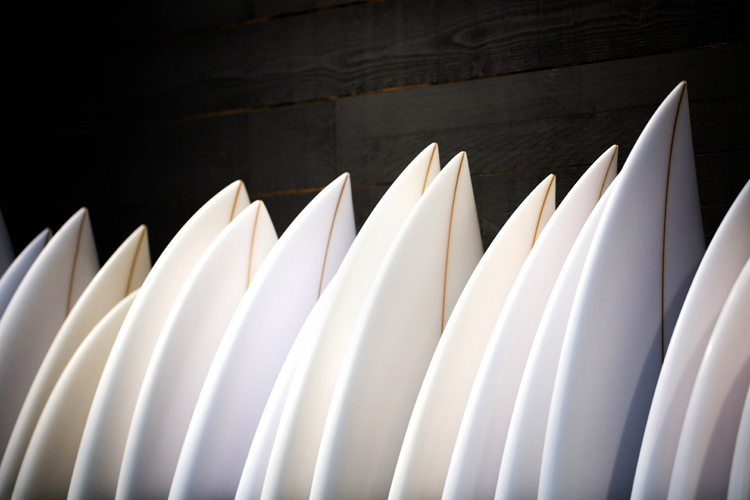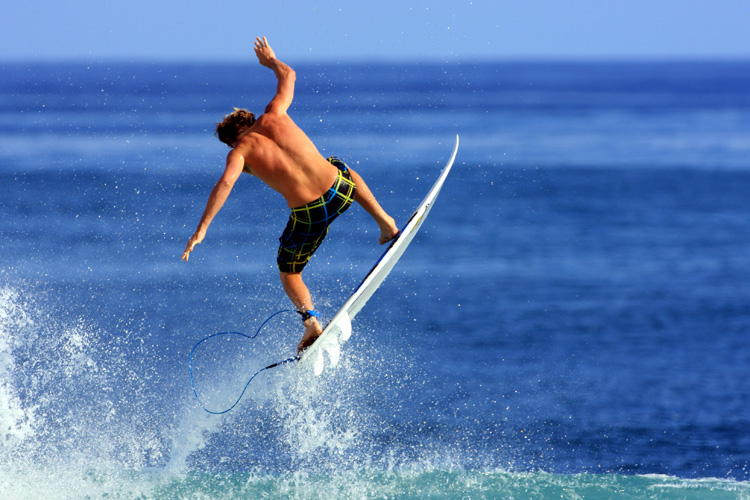Surfboards are amazing objects of design that blend the emotional need to ride a wave with the rationality behind hydrodynamics.
However, they can also be dangerous weapons that hit the most sensitive parts of the body, causing lethal and irreversible damage to the human body.
It might sound strange, but the only difference between guns and surfboards is that real firearms are purposely made to hurt or kill.
Surfboards were designed to provide moments of joy, but they can also cause harm and have serious consequences.
The truth is that we lose contact with our surfboards more often than we think, and that's precisely when accidents occur. And if we add crowded lineups into the equation, we end up cooking a dangerous formula.
While it is true that, in larger surf, wave riders sometimes have no option but to abandon ship, it is also true that, in extreme situations, surfboards are lifelines that keep us above the surface of the water and help us get back to shore.
So, surfboards are what they are and can't always be made of foam.

Types of Injuries
But how dangerous are they? According to a study released in 2002 (Nathanson, Haynes, Galani), two-thirds of all surfing injuries are caused by surfboards.
Unfortunately, surfboards have already killed people - surfers and swimmers. They're missiles driven at high speeds, and when they hit the
That is why surfers carry an enormous responsibility under their feet. And there are many situations in which beginners, intermediate, and advanced surfers lose their boards:
- Duck Diving: if you can't grab the board while performing a duck dive on a big wave, you'll lose control of the board, and it may hit someone nearby;
- Taking Off: sometimes, we pick the wrong wave or time it wrong, and the board becomes a living organism;
- Wiping Out: falling off a wave happens all the time. Whether the waves close out, you slip, or just can't execute a maneuver, you and your board travel in different ways;
- Kicking Out: there are many ways of bailing out of a wave, and the wind sometimes plays tricks on us that can cause unwanted injuries;
- Gear Problems: breaking a leash means having a large object moving uncontrollably in the surf zone;
Shaun Tomson, the 1977 world surfing champion from South Africa, once said that "surfboards are made with pointy noses for purely aesthetic reasons. Rounding off the last half inch has no effect on performance."

Everything on a surfboard is dangerous. Are you still not convinced? Let's take a look at how different areas of the surfboard can potentially injure or even kill someone:
The Nose and the Tail
Depending on the types and models, the nose of a surfboard is more or less like the tip of a harpoon and can potentially inflict severe injuries on yourself and other surfers and swimmers.
The nose and the tail account for 21 percent of all board-related injuries.
The Deck and the Bottom
The deck and bottom of the surfboard are large, hard surfaces that traditionally hit the surfers' heads whenever they wipe out, resurface, or kick out in offshore wind conditions.
Wearing a helmet protects your skull from high impacts.
The Rails
The rounded edges of the surfboard are responsible for 21 percent of all surfboard-related injuries.
Light and hard blows can cause bruises, concussions, break bones and knock out teeth.
The Fins
Forty percent of all surfboard-related injuries are caused by surf fins.
When a surfer hits a fin, the result will be lacerations and more or less severe cuts to the head, face, and wetsuit-protected regions.
The Leash
Jack O'Neill, the wetsuit pioneer and founder of O'Neill, lost an eye after an outstretched leash slingshot back and hit his face.
Never underestimate what a leash can do in case of a wipeout in a bigger surf.
Remember: never discard your surfboard. In case of a wipeout, cover your head with your hands.
Surfing is a relatively safe sport as long as surfers learn how to use their equipment properly.
